Have you ever wondered how Machu Picchu was built, a civilization without steel, without the wheel, and without pack animals that constructed a stone city on top of a mountain? It’s not a trick, nor a myth, nor a miracle. It is pure engineering made with brain, heart, and community. In this blog, I will show you how the builder of Machu Picchu achieved such a feat, from the extraction of its stones to the secrets of the Machu Picchu stone walls that still resist earthquakes.
The Inca secret that explains how Machu Picchu was built
While today we use cranes and concrete, the Incas built an entire city on top of a mountain without a single wheel. How did they do it? The answer is not found in architecture books, but in ancestral wisdom. In this article, I will tell you how Machu Picchu was built and why it remains a mystery that amazes even modern engineers.
What is Machu Picchu?
Machu Picchu is an ancient Inca city made of stone, built with great precision between the mountains of Huchuy Picchu and Huayna Picchu. It is surrounded by impressive peaks like Salkantay and the snow-capped Wakaywillka, and is located between the valleys of Kusichaca and Aobamba. Thanks to its strategic location and design, the city remained hidden for centuries.
Where is Machu Picchu located?
Machu Picchu is in the Cusco region, in the district of the same name, at 2,453 meters above sea level. It stands on a mountain surrounded by the Urubamba River and unique Andean landscapes. It is easy to reach from Cusco by train or by walking the famous Inca Trail.
Who ordered the construction of Machu Picchu?
Pachacutec, one of the most important rulers of the Inca Empire, was the one who ordered the construction of Machu Picchu. He did so after reorganizing the Tahuantinsuyo as part of his plan to strengthen control over the territory. Additionally, he sought to show the greatness of his rule with carefully planned and large-scale projects. Today, you can visit it and walk the same paths that he once used.
How long did the construction of Machu Picchu take?
According to carbon-14 dating, the construction of Machu Picchu was carried out before 1450 and lasted more than 30 years. The building process was done in stages: first, the terrain was prepared by cutting the surface, creating new spaces, and filling in areas. Then, the construction of the main architectural structures began, and finally, details and agricultural zones were added, finishing around 1470.
The Inca secrets behind the construction of Machu Picchu
The surprising geological fault beneath Machu Picchu
Did you know that Machu Picchu was built right where two geological faults intersect in the shape of an X? These formations, over 8 million years old, gave birth to the Peruvian Andes. The Incas skillfully took advantage of them to build temples, staircases, and homes. They also used the exposed granite as a natural source of stone to build the city. The ancient builder of Machu Picchu knew how to use the environment wisely.
The hydraulic mystery that still flows in Machu Picchu
The Incas knew how to take advantage of the natural cracks formed by geological faults in Machu Picchu. They used these fissures to channel meltwater and rainwater, turning them into efficient water distribution systems. Thanks to this, the city had fountains, channels, and reservoirs that were well integrated and can still be seen today. Everything was designed so the city would have a permanent water supply.
Did you know…
Because of the geological fault, the Incas built slanted earthquake resistant walls, which to this day have kept the site largely undamaged. These machu picchu stone walls are proof of the precision and brilliance of the builder of Machu Picchu.
The geographic secret that made the construction of Machu Picchu possible
The Incas chose this place because it offered many natural advantages. They made use of the geological faults and the granite batholith, which gave them the necessary stone for construction. In addition, they adapted each structure to the terrain, without altering the landscape. Thanks to this, Machupicchu was not only functional but also protected by its surroundings.
The Inca technique that simplified the construction of Machu Picchu
The Incas took advantage of the geological faults in the land as natural quarries. This allowed them to extract the granite directly from the site, without having to transport it over long distances. Many stones were carved on-site, shaped precisely to fit the design of the city. Even today, you can see blocks that preserve traces of that work.
Important fact…
During Inca times, many cities were built high in the mountains to have a wide view and control the entire valley. This location not only allowed better surveillance but also helped detect possible threats. At that time, there were constant civil wars with people seeking to regain their independence. That is why elevation provided strategic security.
Who built Machu Picchu?
Specialized Ayllus and Mitmaqkuna
The builders of Machu Picchu were the Mitmaqkunas, people skilled in stonework, agriculture, and construction. They came from different regions of the Inca Empire and were relocated by the State to work through the Mita system. Thanks to this collective labor, a unique city was built in the heart of the mountain. The builder of Machu Picchu was not a single person, but a collective of ancient Andean knowledge.
Amautas: sages and designers
The planning of Machu Picchu involved the participation of priests, sages, and architects from the Inca world. They advised each decision while respecting the Andean worldview, which connected human beings with nature.
The symbolism behind Machu Picchu
Did you know that the Inca Pachacutec ordered the construction of Machu Picchu while expanding his territory through the valleys of Aobamba and Kusichaca? His intention was to create a city that reflected the organization and prestige of Cusco. While Cusco represented a puma, it is believed that Machu Picchu was outlined in the shape of a flying condor, a sacred bird in the Andean worldview.
What techniques were used for the construction of Machu Picchu?
Constructive solutions in Machu Picchu
The Inca architects thought through every detail to adapt to the environment. They designed buildings that could resist earthquakes and built agricultural terraces with gravel layers that helped stabilize the soil. If you’ve ever wondered what type of stone did Inca uses to terracing, the answer is granite and crushed stone from local sources.
Construction of walls
In common areas, uncut stones were joined with mud and painted clay. Elite areas featured polished granite with precision joints, forming flawless Machu Picchu stone walls.
Mortarless walls that defy time
Using the Sillar technique, stones were cut to fit perfectly without mortar. This allowed them to withstand seismic movement and remain intact centuries later.
Doors, windows, and niches
In the Inca city, homes had trapezoidal doors and windows, reinforced with stone or wooden lintels. Important buildings featured double jambs and inner doorways.
Use of roofs or coverings
The Inca citadel preserves clear signs of what the roofs of Inca dwellings were like. They used sloping structures with two or four slopes, or even conical roofs, built with alder logs and covered with ichu, a resistant, tall grass. These roofs had a steep slope to withstand the rain, and in many cases were twice as high as the walls. Everything was designed to adapt to the mountain climate.
Water channels and drainage
At Machu Picchu, the Incas created a very well-designed water system. They used underground drains to prevent rain from damaging the buildings, and at the same time channeled water from springs to fountains and canals that you can still see today. They did all this without altering the landscape. If you visit the site, you will notice that even the water flows in an orderly fashion.
Materials used in construction
The builders of Machu Picchu used materials provided by nature that were well suited to the environment. They used adobe or mud bricks for some structures and carved granite for more resistant walls. They covered the roofs with ichu, an Andean grass, supported by alder logs. They also used stone lintels and reinforced details with llama leather, wicker, agave, and reeds, making ingenious and careful use of every resource.
Interesting fact
In Machu Picchu, one of the most common structures is the kancha, a typical unit of Inca architecture. Each kancha consists of four rectangular buildings arranged around a central courtyard. This design not only facilitated the organization of space.
How were giant stones transported?
Stone extraction for the construction of Machu Picchu
To build Machu Picchu, the Incas extracted stones of different sizes using simple but effective tools. They used wooden levers that they placed in the natural fissures of the rocks, and they also struck the rocks with stone hammers to break off the blocks. The entire process was carried out with collective effort and great precision, taking advantage of what the environment had to offer.
Stone cutting
The Incas did not have metal tools, but that was not a problem. They struck the stones with harder rocks, such as diorite, until they achieved the shape they needed. They also used water and friction to carefully split the blocks. With these simple and effective methods, they managed to build a city that still leaves us speechless.
Transporting stones
To move the stones at Machu Picchu, the Incas relied on the strength of their people. They used logs as rollers and wooden sticks to leverage and facilitate pushing. If the stones were very large, they dragged them between several people. The smaller ones were carried on their shoulders or on stretchers. It was all teamwork, done with ingenuity and a lot of practice.
Who were the first inhabitants of Machu Picchu?
The citadel of Machu Picchu began to be built around 1420, and since then it has been continuously occupied. As construction progressed, the architects and builders lived on site with their families, who also took care of food and other necessary tasks. This presence continued until approximately 1530, when civil war broke out among the Incas, a conflict that marked the beginning of the end of the empire.
Collective work and organization
During the construction of Machu Picchu, the Incas organized large work groups, each with specific tasks. Some were responsible for building inclined ramps, others extracted and carved the stones, and several were in charge of transporting them. When a stone was too large, they worked on it directly on site to avoid moving it. Everything was done with order, planning, and a great deal of coordination.
The strategic role of the sacred landscape
Machu Picchu was built on top of a mountain for a very special reason: it was surrounded by sacred hills such as Huayna Picchu, Putucusi, and Salcantay. For the Incas, these mountains were like guardian spirits. In addition to protecting the site, they made the city perfect for important ceremonies. Today, that landscape remains one of the reasons why visitors fall in love with it.
What were the functions of Machu Picchu?
The citadel of Machu Picchu functioned as a carefully organized multifunctional center. Inside, there were residences for the Inca elite, dwellings for the population, temples, ceremonial spaces, mausoleums, and huacas dedicated to the Sun and Moon. Access to certain areas was restricted, suggesting exclusive use. Some studies suggest that it may have been the retreat of the Inca Pachacútec.
Provincial capital
Machu Picchu was built with a key political and administrative function for the Vilcabamba and Aobamba valleys and other nearby areas. It was a strategic point where eight different roads converged, making it a self-sufficient and well-connected city. Like other capital cities of the empire, its design followed the model of Cusco: it was organized into two sectors, Hanan and Hurin Cusco, and had a main square, a Temple of the Sun, and several sacred huacas. Everything was part of a structured and symbolic plan.
Control post
The citadel's location, in a border area, was key to maintaining control over the newly incorporated territories of Antisuyo, the Amazonian region of the empire. From there, the movement of valuable products such as coca leaves, medicinal plants, bird feathers, and gold was regulated. In addition to its political and ceremonial function, the city also played a strategic role in trade and resource management.
Astronomical center
As in every Inca city, Machu Picchu also had wise men dedicated to observing the sky. These astronomers studied the cycles of the sun throughout the year with precision in order to better organize agricultural activities. To do this, they built structures such as the Intihuatana and the Temple of the Sun, which helped them track the sun's movements and accurately determine the times for planting and harvesting.
Ceremonial center
The city was made up of temples and huacas dedicated to the Sun, the Moon, and other Andean deities, and it was also a very important ceremonial space. In these sacred places, the collas and priestesses performed essential functions, dedicating themselves to the care and veneration of the ritual spaces. For this reason, among the most relevant archaeological finds were 174 skeletal remains buried in a cave, 150 of which belonged to women. This confirms the active and central role they played in the spiritual life of the city.
Fortress
The construction of the Inca citadel was strategically advantageous. Its location allowed it to function as a defensive space against possible threats. Added to this were elements such as bridges, lookout points, checkpoints, chambers, tunnels, and discreet access points that reinforced its security and control of the territory.
The abandonment of Machu Picchu
Machu Picchu was continuously inhabited until the 16th century, when the Inca civil war between Huáscar and Atahualpa and the Spanish conquest led to its abandonment. Nature reclaimed the city until Hiram Bingham revealed it to the world in 1911.
If you visit Machu Picchu, don’t just see stones. See the legacy of the builder of Machu Picchu. Now that you know how it was built, you understand why it still takes our breath away.
Frequently Asked Questions
How long did it take to move a single stone?
It depended on the size and distance. For the largest stones, it could take days or even weeks, as they relied solely on human strength, levers, and wooden rollers. It was all about well-coordinated teamwork.
How heavy were the stones used in Machu Picchu?
Some stones weighed between 10 and 20 tons. And even though they didn’t have cranes, the Incas developed incredibly clever techniques to move them without causing any damage.
Did the Incas work at night, too?
No. Most of the work was done during the day, taking advantage of sunlight. Nighttime work was risky and inefficient, especially on such uneven terrain.
What did they do if a stone didn’t fit?
They carved it directly on-site. Nothing was wasted. If a stone didn’t fit, it was patiently adjusted until the perfect fit was achieved; no cement needed.
How did they decide where to build each structure?
Inca sages and architects carefully observed the land and the surrounding mountains. Everything was planned according to the position of the sun, terrain orientation, and the energy of the environment. Nothing was left to chance.
Did they use animals to build Machu Picchu?
No. While they had llamas, they weren’t used to carrying heavy stones. Everything was done by human hands, organized in crews and backed by deep technical knowledge.
Were roofs part of the original construction?
Yes. Although they no longer exist today, Machu Picchu’s houses once had roofs made of ichu (Andean grass) supported by wooden frames. These roofs were resistant to mountain rain and cold.
Why doesn’t Machu Picchu collapse during earthquakes?
Because its walls were built with angled cuts that absorb seismic movement. Plus, no mortar was used; the stones fit so precisely that they can move slightly without falling apart. Ingenious, right?
Can we know who carved each stone?
Not exactly. They didn’t leave signatures, but we do know they were skilled workers brought in from different regions of the empire, organized by expertise under the Mita system. Each one contributed to the legacy of the builder of Machu Picchu, whose identity lives on through stone, not name.
Was Machu Picchu built all at once?
No. It was built in stages. First, the land was prepared. Then the main structures were erected, and finally, details like terraces and water channels were added. It was a process that took decades.

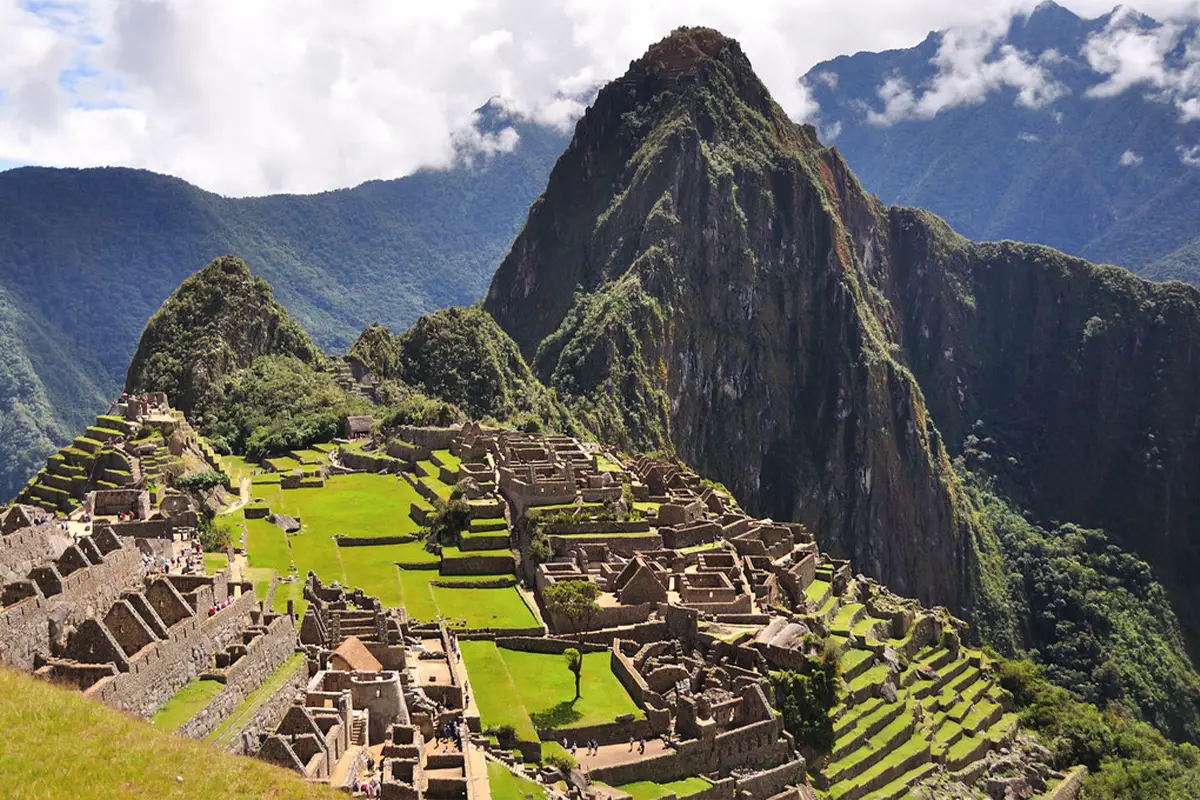

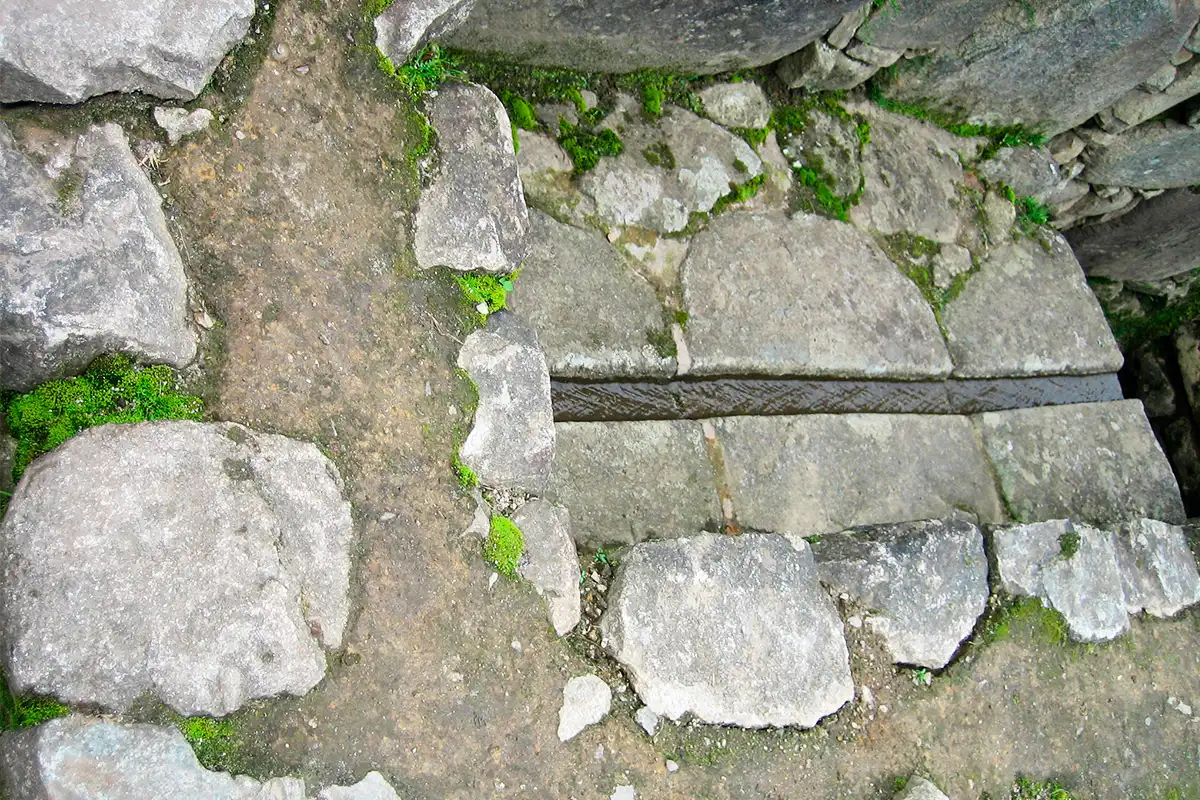
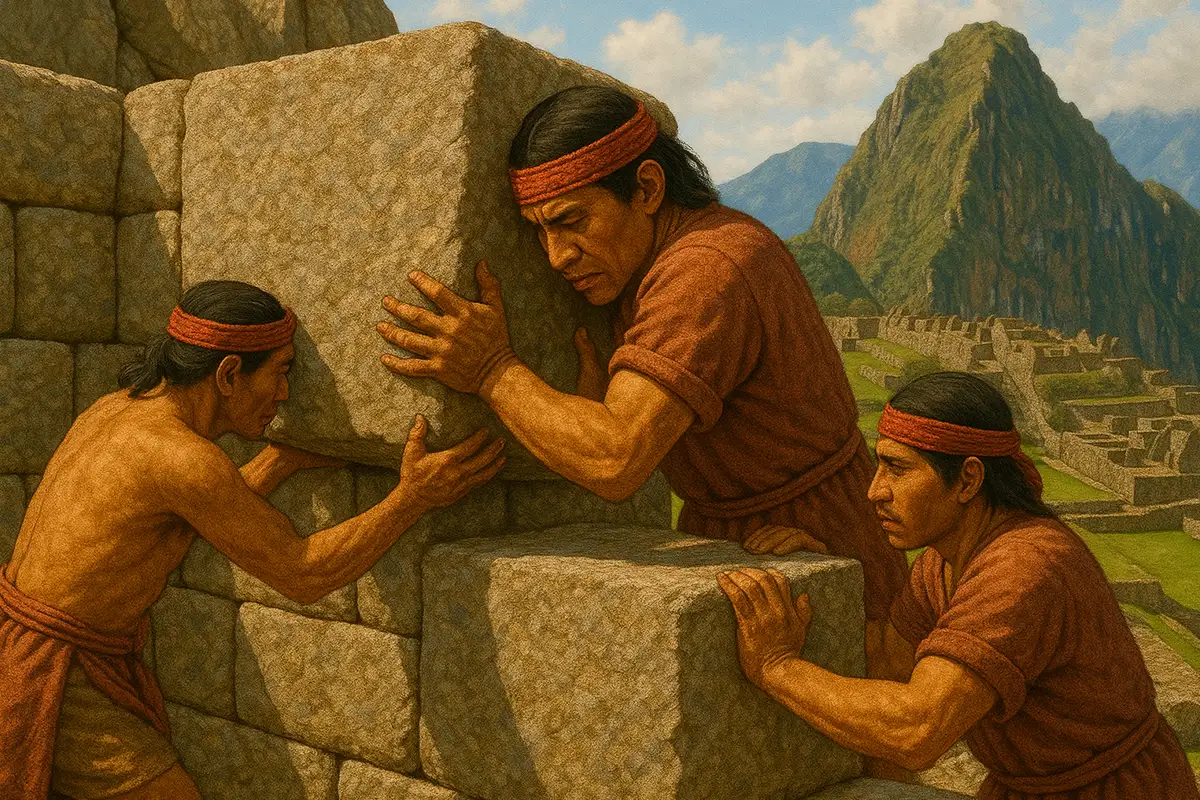
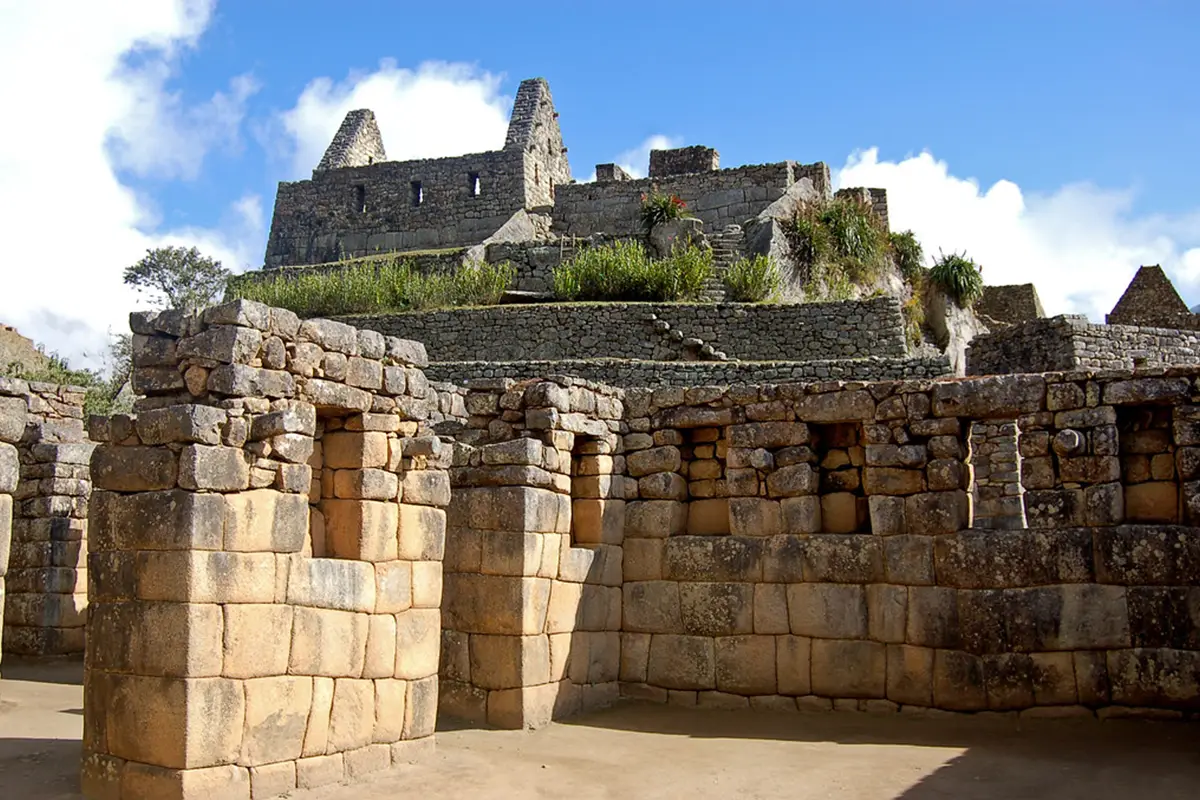
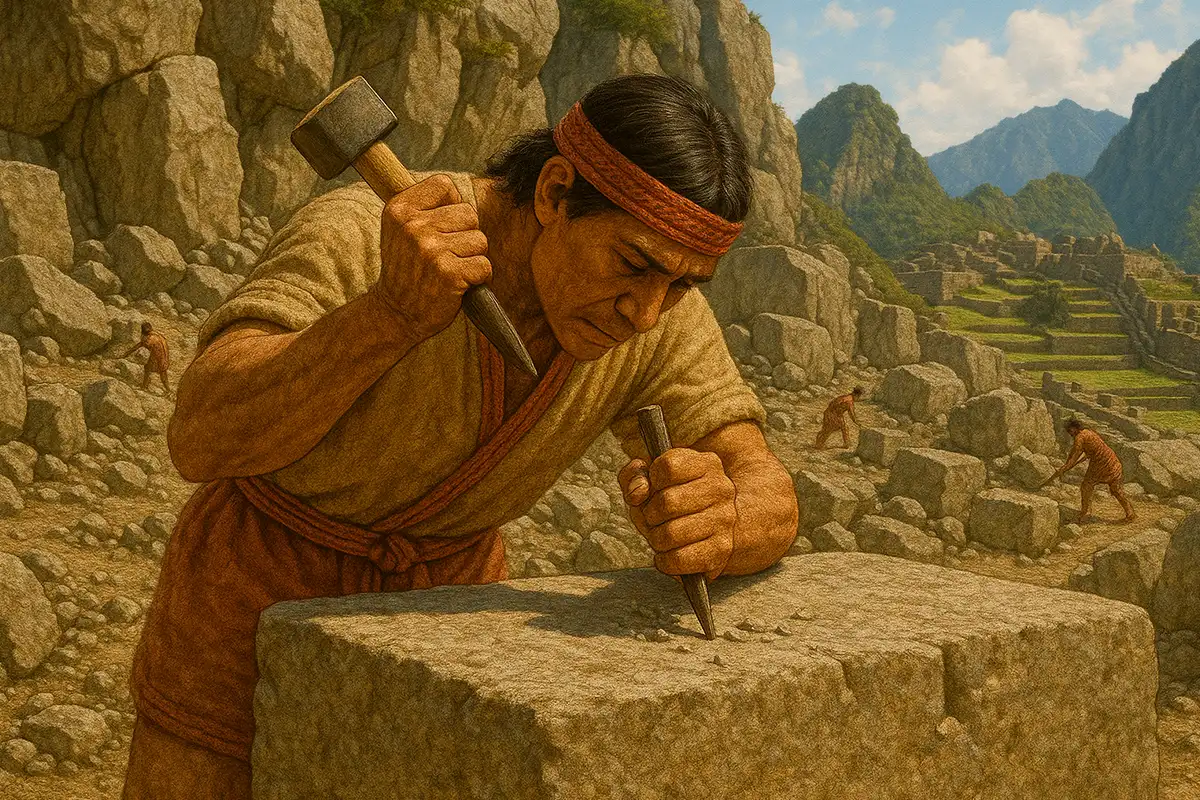

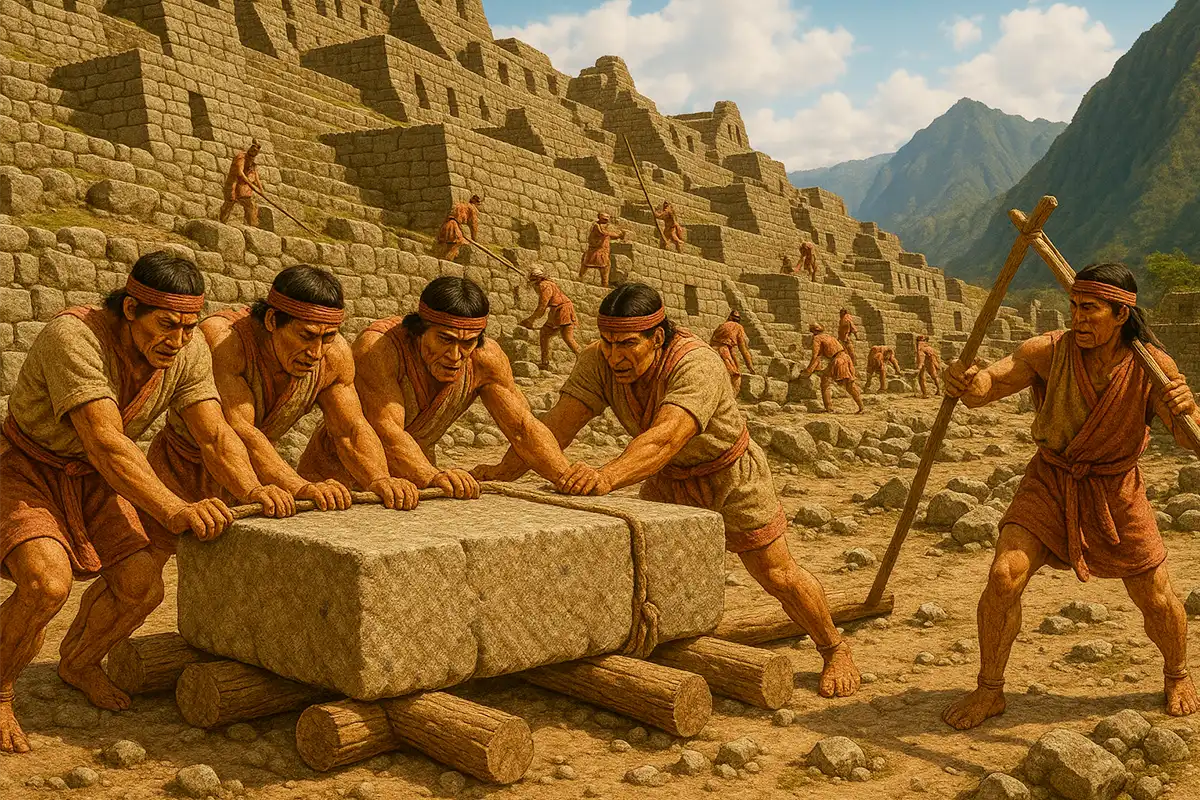
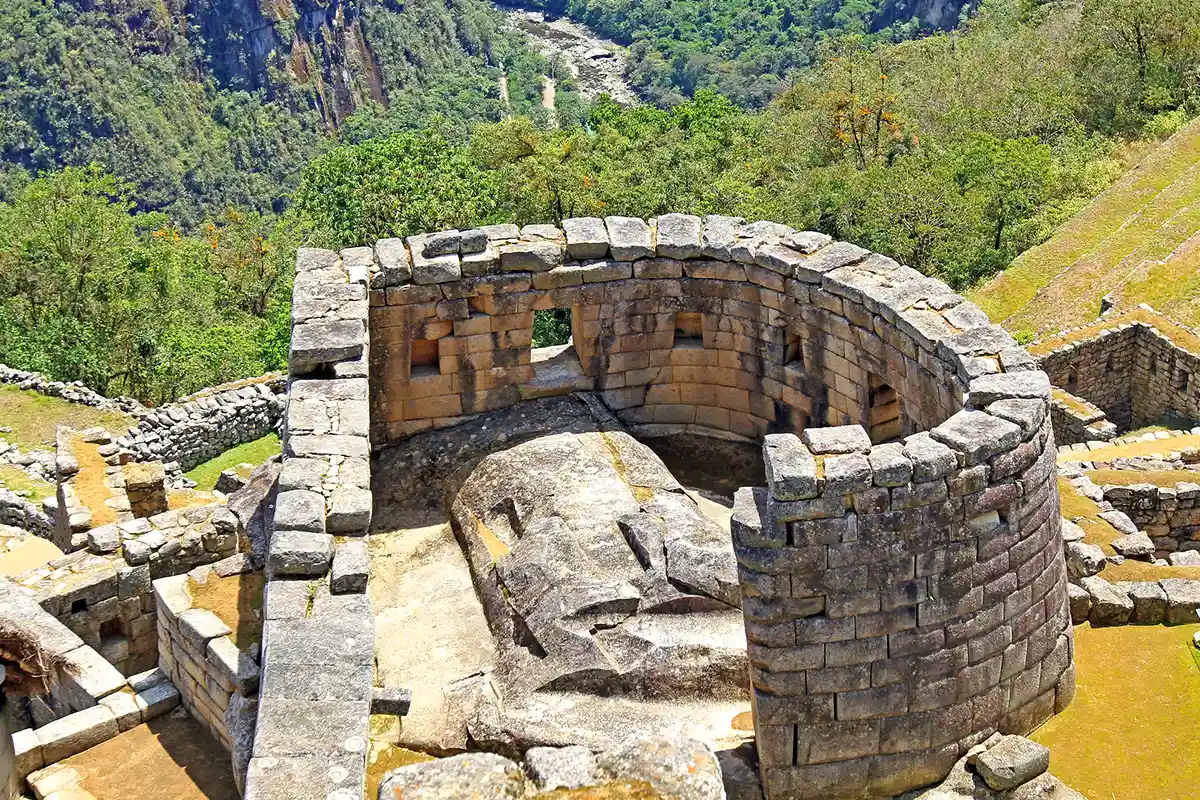

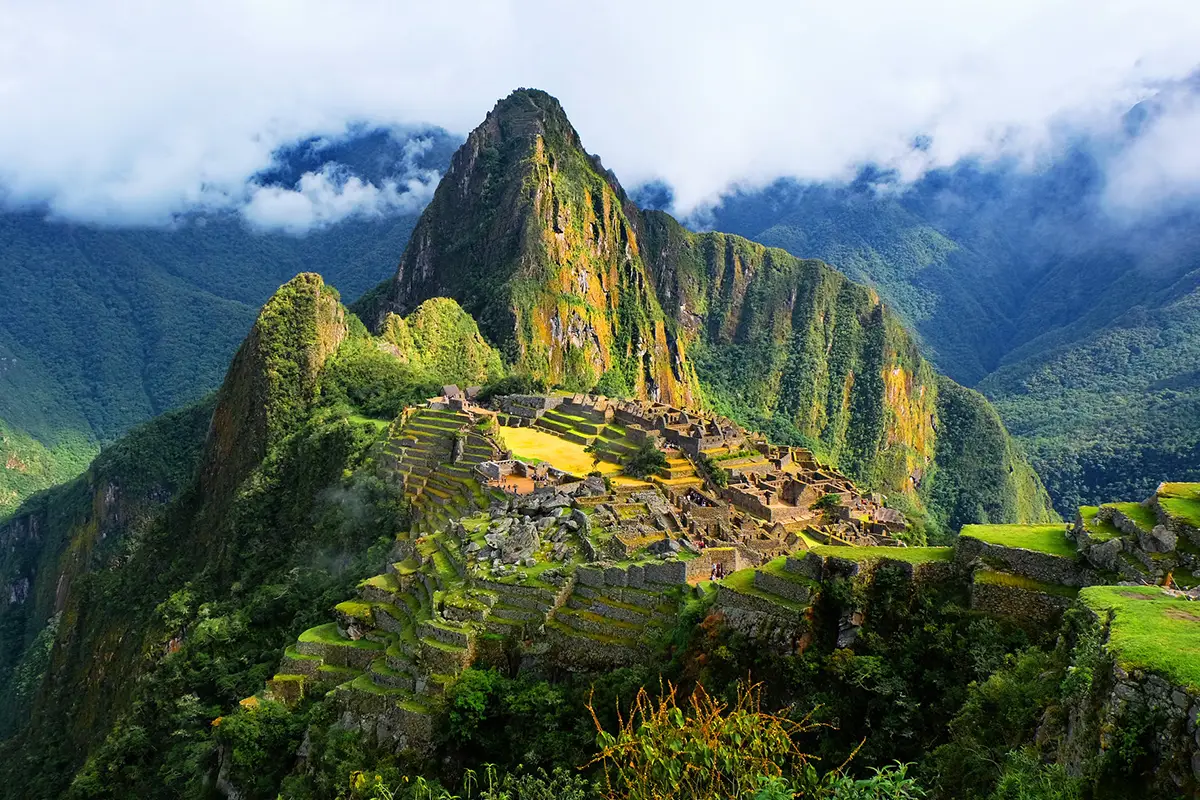

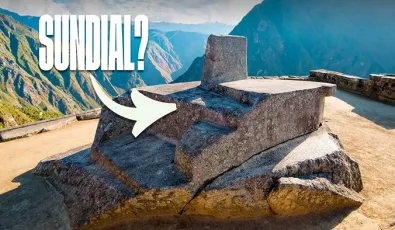
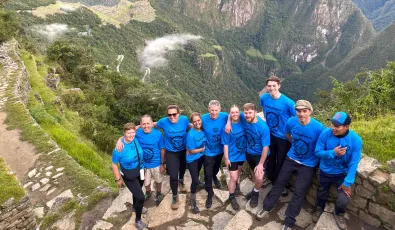
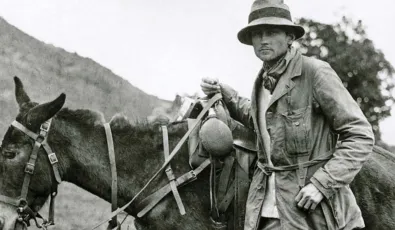


Add new comment